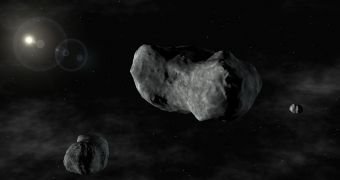Scientists at the Massachusetts Institute of Technology (MIT), in Cambridge, working with colleagues at the Paris Observatory, in France, have determined in a new study of multiple objects in our solar system that rogue asteroids are more common than originally thought.
This was demonstrated in a wide-scale analysis of more than 100,000 asteroids, most of which are located in the Inner Asteroid Belt (IAB), between the orbits of Jupiter and Mars. The work showed that most asteroids do not remain static throughout their enormous lifespan.
Back in the early 1980s, astronomers believed that objects which formed at a certain distance from the Sun remained in their orbits until they met their respective demises. Slowly, emerging research has turned that idea on its head, suggesting a much more mobile history for most asteroids.
This paradigm shift occurred as a result of new discoveries, such as the fact that planets within the solar system moved nearer and farther away from the Sun, back when our parent star itself was very young. Over time, the planets settled down in their final orbits, but their gravitational pulls wreaked havoc in the asteroid population.
This is why, of the hundred thousand asteroids in the IAB, a very large percentage did not originate at this location. Most objects here differ from each other significantly in terms of chemical composition and size. The new study suggests that Jupiter may have been responsible for this weird arrangement.
“It’s like Jupiter bowled a strike through the asteroid belt. Everything that was there moves, so you have this melting pot of material coming from all over the solar system,” comments Francesca DeMeo, who led the mapping effort as a postdoctoral research with the Department of Earth, Atmospheric and Planetary Sciences at MIT.
In a paper published in a recent issue of the top journal Nature, DeMeo and PO astronomer Benoit Carry argue that the new map may from now on be used to inform new theories seeking to explain the early evolution of the solar system, a process that is still very much shrouded in mystery.
“What they have done is attempted to at least qualitatively describe how the unexpected relationships between asteroid size, distance from the sun, and composition fit into the current dynamical models and other insights from the past two decades,” comments expert Clark Chapman.
“I'm very glad that this basic research has been done, and I think it is a most welcome contribution to understanding the solar system,” concludes Chapman, who holds an appointment as a senior research scientist at the Southwest Research Institute (SwRI), in Boulder, Colorado.

 14 DAY TRIAL //
14 DAY TRIAL //